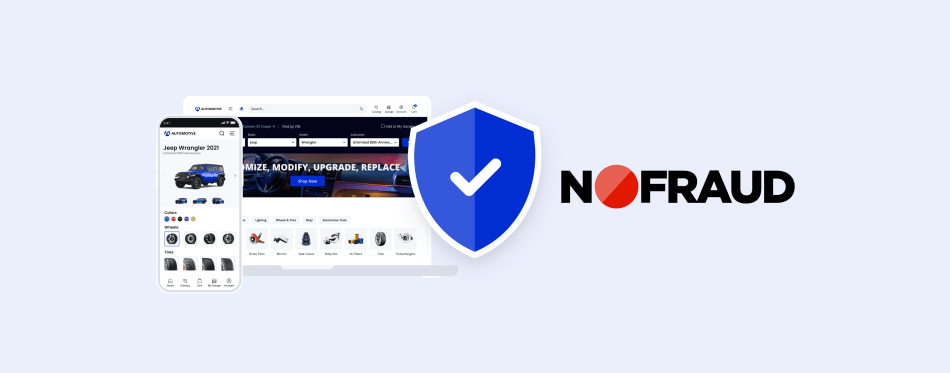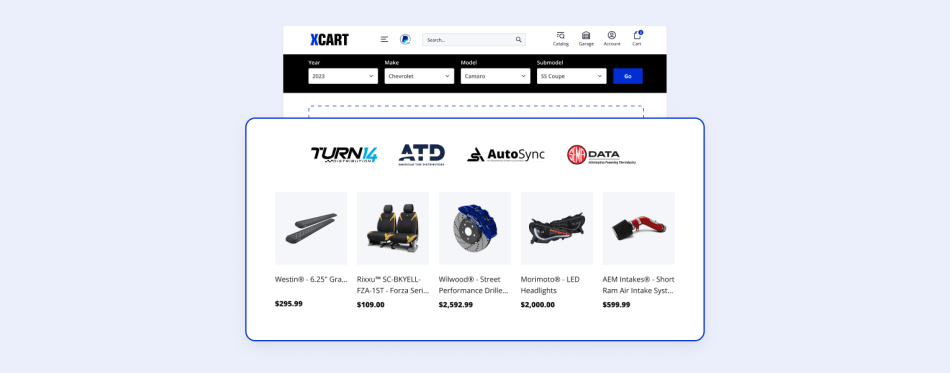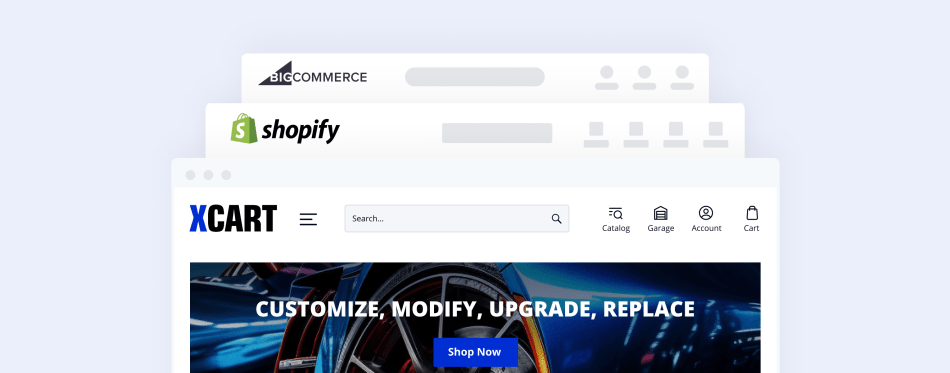How to Choose the Right Web Technology Stack for Your eCommerce Business
This blog post was originally contributed by Vitaly Kuprenko, a Product Manager at Tonti Laguna Mobile, on behalf of Cleveroad.
If you want to develop a website, one of the first issues to solve is an appropriate tech stack for your project. The chosen technologies are in charge of the scalability of your website. Additionally, your platform should work fast since 47% of users expect websites to load in less than 2 seconds. So, there are a lot of factors to consider while picking the perfect web tech stack.
We’ve decided to create a guide on how to select the appropriate technologies for back-end and front-end development. Additionally, you can find seven pieces of advice to take into account.
What Is Tech Stack?
Let’s start with the basics — tech stack meaning. Web development stack stands for the combination of programming languages and various development tools, e.g. programming languages, frameworks, etc. These tools are usually divided into technologies for client-side development and tools for server-side building.
Quick Stats
Before discussing the tech stack of front-end and back-end development, let’s look through some interesting statistics about websites. It’s better to take into account this data before starting the development process.
- 57% of users don’t recommend the e-commerce website with poor design.
- Many adults (85%) claim that the mobile version of the website should be as good as a desktop platform.
- 88% of users wouldn’t return to the site if their first user experience was bad.
- Slow-loading website leads to $2,6 billion lost for retailers every year.
- 75% of customers form an opinion about the company’s credibility based on the website design.
What is Front-End Tech Stack?
Front-end or client-side means the visible part of your project. So, the user can see and interact with it while using your platform.

Considering web development full-stack, there are several essential tools with various frameworks that can make the development process faster and more comfortable.
The main list of web technologies:
- HyperText Markup Language or HTML
- Cascading Style Sheets or CSS
- JavaScript or JS
- SCSS
- SASS
- LESS
Of course, each technology has many frameworks. For example, JavaScript programming language includes such frameworks and libraries as
- Angular;
- React;
- Vue;
- jQuery;
- etc.
Additionally, such languages as TypeScript and CoffeeScript can be utilized for web application development.
- TypeScript. This language can simplify the web development process since Angular (popular framework for front-end building) was created with the help of TypeScript. A lot of successful projects were built using Angular or TypeScript, e.g. Gmail, PayPal, The New York Times, and more.
- CoffeeScript. This language provides an opportunity to write more compact code.
Client-side development also needs tools for assembly. A lot of web developers tend to choose JS tools like WebPack, Gulp, and Crunt since they offer to automate routine processes.
JavaScript is one of the leading technologies for web development (both front-end and back-end). This programming language includes all the required frameworks, libraries, and so on.
What is Back-End Tech Stack?
Back-end or server-side development is about the invisible part of the project since users can’t interact with it directly. Back-end development stands for creating business logic. Simply saying, when the users fill the form to get some service and press the button — they deal with the client-side of the project. Server-side checks the data and provides access to further website use.

Back-end consists of a server, an application, and a database. Software developers create business logic, deploy web applications, and more on the server-side of the project.
Server-side development includes several elements with certain technologies. Let’s discuss them more precisely.
- Operating system. The first decision to make is picking an OS for developing web apps. The most widespread operating systems are Linux and Windows.
- Web server. The server processes HTTP requests from the browser and returns the responses. Among the accessible servers are Nginx and Apache.
- Databases. To process a lot of required data (e.g. dates, geo positions), it’s necessary to integrate the database. For instance, many developers prefer to use MySQL, PostgreSQL, MongoDB, DynamoDB, and Firebase Database.
- Storage. AWS S3 and Firebase Storage are commonly used during web development.
- Hosting. Hosting service for an e-commerce website provides an opportunity to post the site onto the Internet. During the web development, such services as Firebase Hosting, AWS S3 Bucket in hosting mode, and Nginx are used.
- Programming language. Developers write code for server-side using programming languages. There are many languages like C#, PHP, Ruby, Python, and more. The choice always depends on the project requirements and business goals.
Web development frameworks. Frameworks stand for various tools that make the development process faster and easier. As a result, there are many frameworks, e.g. Laravel, Yii2, Express, Nest.js, and so on.
What Are the Most Commonly Used Tech Stacks?
We’ve already listed the parts of web app development. Let’s discuss four ready-made technology stacks that offer to optimize the building process.
- LAMP Stack. It’s an abbreviation of such tools as Linux (OS), Apache (server), MySQL (database), PHP or Perl (server-side development language). It’s better to choose the LAMP stack if you need to create an app fast. However, this technology stack isn’t scalable. Additionally, it has low performance.
- Python-Django Stack. Python language, in combination with the Django framework, can be used for back-end development. Additionally, web engineers utilize Apache, MySQL, or PostgreSQL. Django framework provides a high-security level, e.g. prevent CSRF injections.
- MEAN Stack. One more abbreviation, it means MongoDB (database), Express (back-end framework), Angular and Node.js (back-end platform). Of course, the chosen technologies can vary depending on the project requirements. For instance, it’s possible to use MySQL instead of MongoDB. By the way, this set of tools is commonly used for E-Commerce website development.
- .NET Stack. .NET is a robust framework that allows for developing complicated web applications. C# is the primary programming language in this stack. The combination of the .NET stack and other open source technologies provides web engineers with the opportunity to create apps for small companies and enterprises. This tech stack offers more than 60 frameworks, several platforms, many SDKs, libraries, and so on.
Wrapping up, the web technology stack consists of tools for front-end and back-end building. It’s necessary to consider your project requirements before choosing technologies carefully. Let’s discuss tips and tricks for selecting tech stack for web or mobile applications.
Additional Resources:
- Most Popular Technology Stack To Choose From Full Stack Vs. MEAN Stack Vs. MERN Stack In 2019
- A Guide to Technology Stacks (Infographic)
- LAMP Stack or MEAN Stack — Which One to Choose For Your Next Web Application?
- MEAN vs. MERN: Difference and Benefits
How to Choose a Tech Stack? 7 Useful Tips
Every project starts with choosing the perfect technologies. To save you time, we’ve created a list of seven hints that can make a choice easier:
- Rely on your experience
- Study project requirements
- Consider scalability
- Don’t ignore trends
- Utilize security tools
- Think ahead
- Consider expediency
Below we discuss all of them more precisely.
#1. Experience Comes First
It’s necessary to use your experience and skills. For instance, there is a Node.js developer in your team. Of course, it’s better to use their knowledge to create a web or mobile app. If you create a simple application, choose a well-known tech stack strategy to make the development process faster.
#2. Consider Project Requirements
You need to define the target audience of your future web app. Based on this data, it’s possible to implement features according to users’ age, interests, and more. After that, you need to consider the complexity of the project.
Are you going to create a landing page or a complicated e-commerce site? This information can assist you in choosing a tech stack. For instance, the Angular framework is perfect for creating a one-page app. Complex project development requires using various JS frameworks, libraries, and more.
#3. Take the Scalability into Account
Your app’s architecture has to be scalable. It’s vital for further development. There are two types of scalability — horizontal and vertical. The first one means the capability of working on various devices. The vertical scalability stands for an opportunity to add some new features or elements to a web app in the future.
To achieve good scalability, it’s better to utilize powerful programming languages like JavaScript. Such languages have various libraries and frameworks, so they are flexible.
#4. Follow Trends
You need to keep an eye on web development trends since it’s essential to choose technologies that are trendy and supported by a large development community. In such a case, you can find a solution for a tech issue on the web since there are many engineers experienced in this technology.
#5. Security Tools
Any user wants to be sure that their personal data is secure. So, it’s better to choose technologies that offer high security. This issue is significant, especially if you consider payment integration. Pay attention to the security issue before selecting the tool and integrate only safe ones.
#6. Mind the Skills
Before choosing a particular technology, make sure that your team has enough skills and knowledge to implement this tech stack. So, you need to consider and foresee challenges to avoid tech or budget issues during web development.
#7. Keep in Mind the Expediency
It’s unnecessary to choose the most trendy and popular tools if your team is good at old-school but still actual technologies. Using familiar technology, developers can build web or mobile applications faster. Of course, it’s good to learn something new, but if you want to release the project in a short time, you need to pick a habitual tech stack.
Project Size
One of the essential factors while selecting the right set of technologies is determining the size of your project. It’s possible to divide the projects into three categories according to their size and complexity — small, medium, and large projects. Let’s discuss their peculiarities.
- Small projects. Such projects don’t require many complicated features and can be developed faster. For instance, there can be such projects as landing pages, MVPs (Minimum Viable Products), and so on. Usually, the developers choose Python-Django or Node.js tech stack for such kind of projects.
- Medium projects. These projects tend to have more functions and need more powerful tech stack. A lot of e-commerce projects belong to this size. To create such an app, it’s better to use MEAN or LAMP stacks.
- Large projects. The projects of this size tend to have high requirements and scalability since they manage a lot of users from all over the world. There can be social networks, FinTech software, or global e-commerce platforms. The development of this project takes a lot of time since the complicated tech stack and advanced features. Engineers prefer to use Angular-Node.js or Ruby-on-Rails.
As you can see, the size and complexity of the projects can completely change the software development stack. The more complicated your product is, the more powerful web application stack you need.
Technology Stacks Examples
Let’s look through technology stacks of prominent projects like YouTube, Uber, and so on.
- YouTube Tech Stack. This platform provides users with many exciting features like uploading videos, leaving comments, making playlists with favorite videos, and more. YouTube is utilized all over the world and has billions of everyday users.

- Slack Tech Stack. This communication platform is popular among companies. Slack provides a lot of opportunities to manage different conversations, implement third-party tools (e.g. GoogleBot), and more.

- Uber Tech Stack. This famous transportation company offers a comfortable taxi service. The platform connects drivers and passengers that are ready to share a ride. The company claims that there are 14 million finished trips every day.

- Netflix Tech Stack. Netflix is a streaming service that offers users various TV shows, TV series, movies, and more. To watch the content, the user needs to subscribe. Of course, this platform has a robust tech stack that we’ve listed below.

- Instagram Tech Stack. This social network has become the second most engaged platform, according to eMarketer. Instagram allows users to share photo and video content with their friends. The platform offers such essential features as following users, liking their pictures, watching the stories, etc. These days, Instagram became a powerful marketing channel. Additionally, there are some advanced features like starting a live video that can be saved for 24 hours, direct messages, and so on.
And some more information about world-known companies you’ll find here:
Up to You
Choosing a web technology stack can be time-consuming and challenging. And the final decision always depends on your project requirements and time frames. If you want to develop a complex project, it’s better to pick more powerful technologies like JavaScript with many libraries.
About the author









